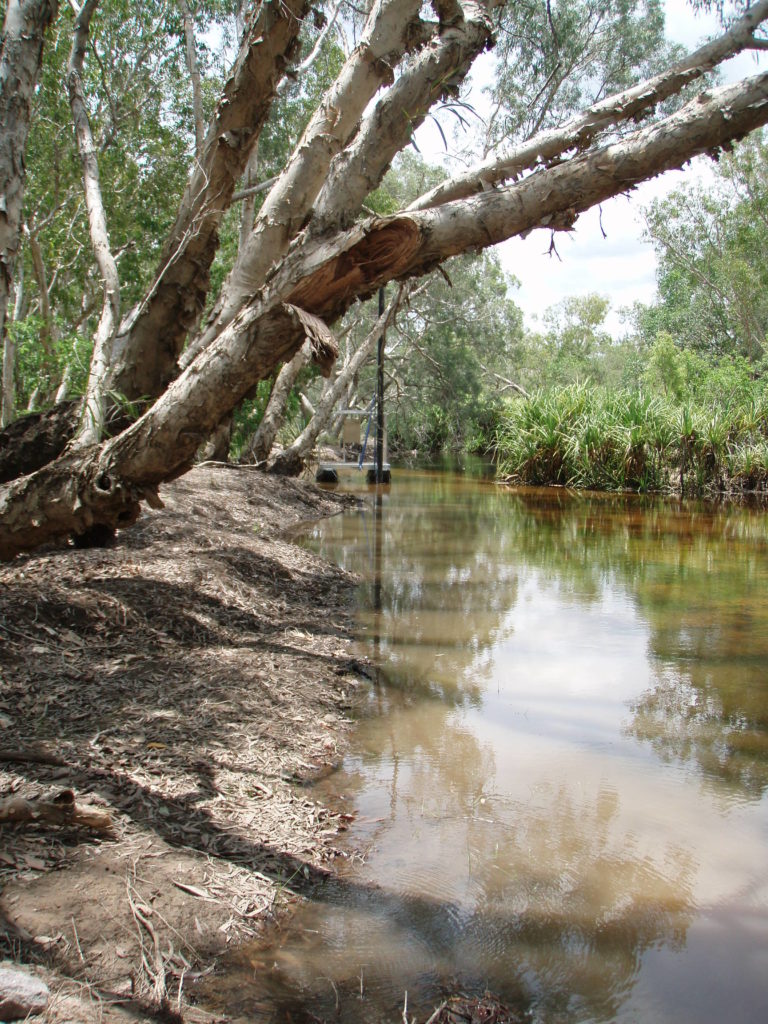23 August 2018
Riparian, or riverbank, vegetation in the Top End depends on groundwater to sustain it during the dry season. Weathering of waste rock from Ranger uranium mine releases contaminants, including magnesium sulfate (a salt) which, after the closure and rehabilitation of the mine in 2026, is predicted to move through the local groundwater at concentrations that could potentially affect plants along nearby Magela Creek. Knowing how this salty groundwater might affect riparian vegetation along the creek is the focus of a new Hub project led by Professor Lindsay Hutley of Charles Darwin University and partnering with the Department of the Environment and Energy’s Supervising Scientist Branch. Identifying how much groundwater the trees along Magela Creek need and how sensitive different tree species are to magnesium sulfate will help inform rehabilitation of the mine. This work will be used to assess the risks to riparian vegetation from the contaminated groundwater, predict its impact, identify where ongoing monitoring should be focused, and determine which tree species grow best in salty areas for rehabilitation purposes. Read more in the project start-up factsheet.

A monitoring site in Magela Creek, Kakadu. Photo: Supervising Scientist Branch (Commonwealth of Australia).
Want to know more about the Resilient Landscapes Hub's activities and our research into practical solutions to environmental problems? Stay informed about activities, research, publications, events and more through the Hub newsletter.
"*" indicates required fields